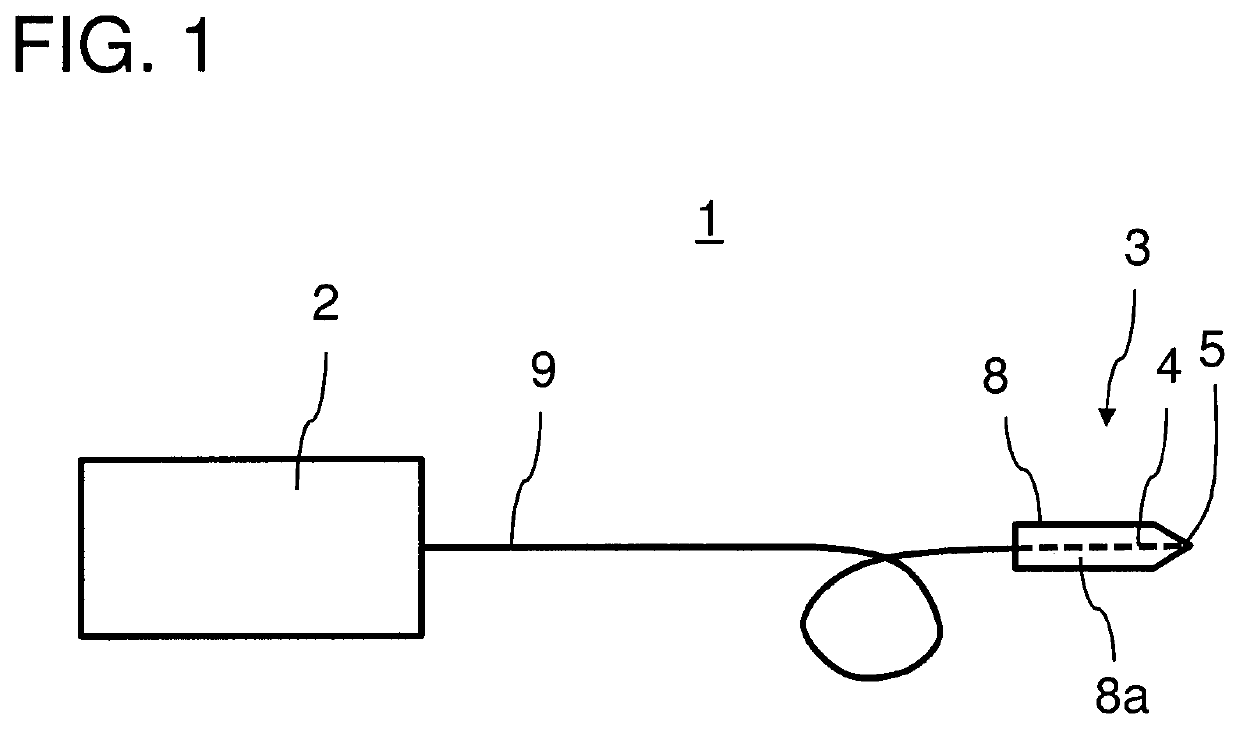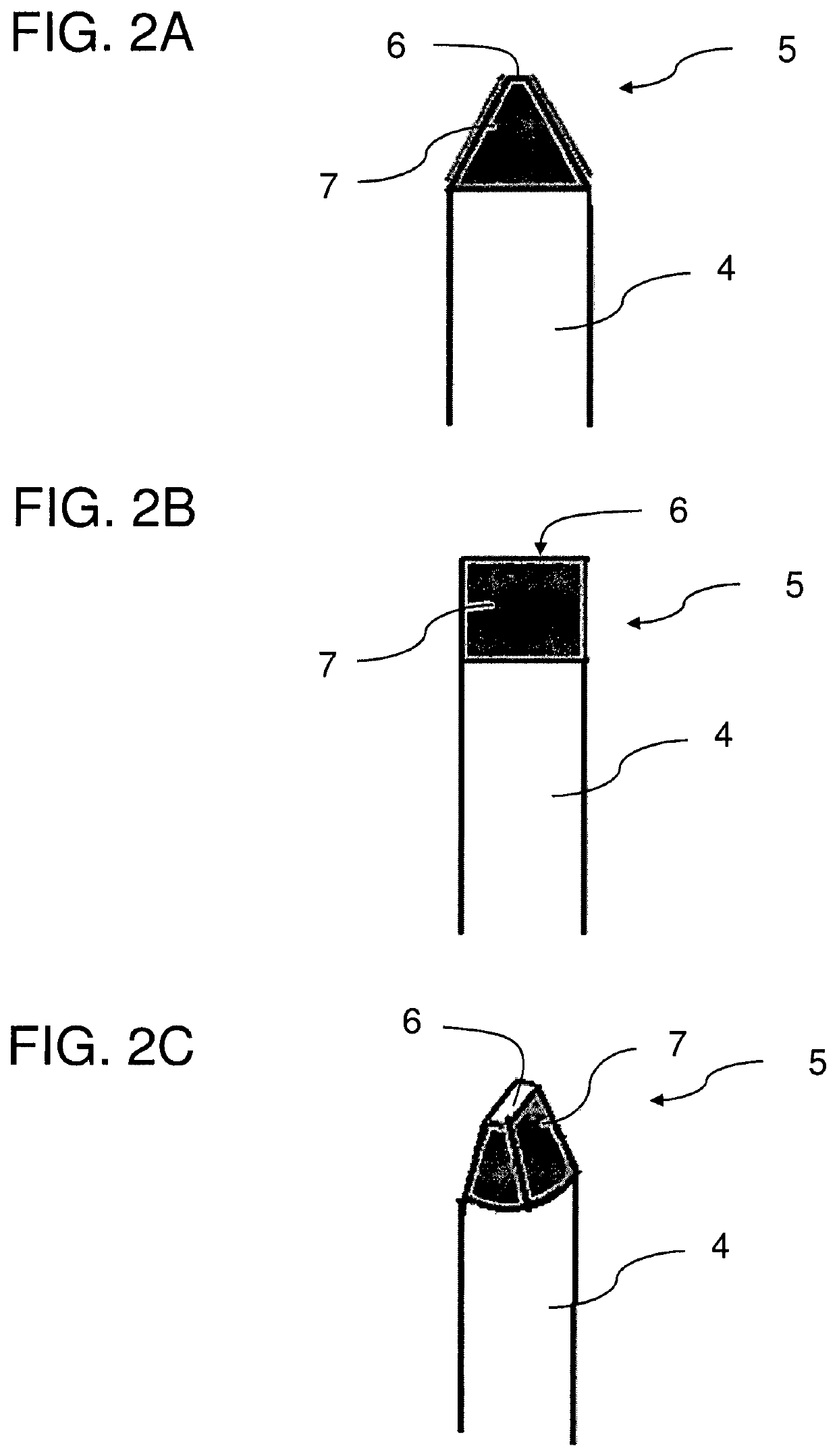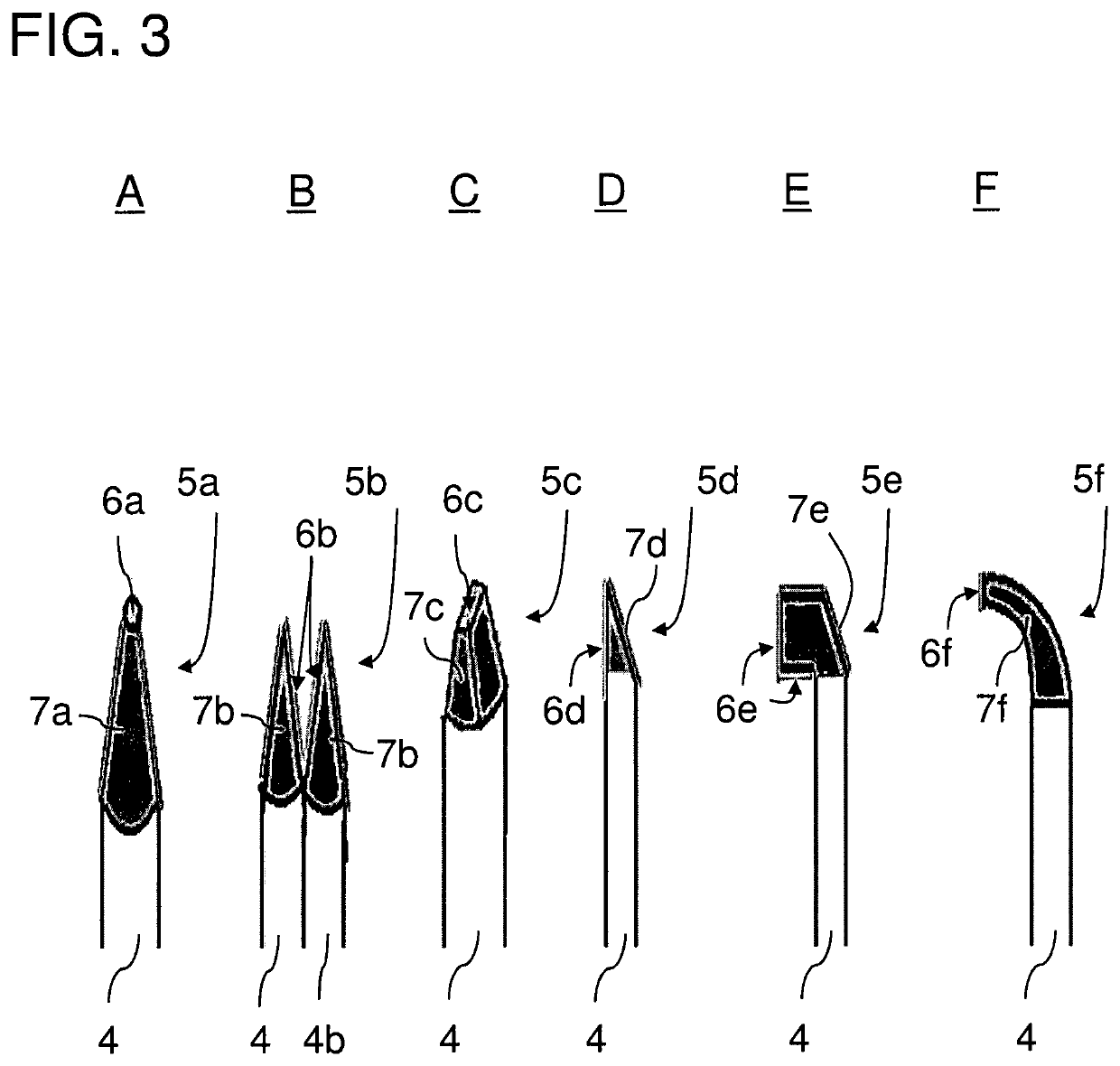Laser surgery apparatus for contact laser surgery
a laser surgery and laser surgery technology, applied in the field of laser surgery apparatus for contact laser surgery, can solve the problems of mechanism cuts, difficult to treat large tissue areas in an even fashion, excessive tissue vaporization and carbonization, etc., and achieve the effect of reducing fluence, effective cutting, and reducing the shear force needed
- Summary
- Abstract
- Description
- Claims
- Application Information
AI Technical Summary
Benefits of technology
Problems solved by technology
Method used
Image
Examples
Embodiment Construction
"d_n">[0054]FIG. 1 shows a schematic illustration of an embodiment of a laser surgery apparatus 1 for contact laser surgery according to the invention.
[0055]The laser surgery apparatus 1 comprises a picosecond infrared laser (PIRL) source 2 that is configured to generate pulsed IR laser light of a wavelength falling within a range from 1 μm to 20 μm, of a pulse duration falling within a range from 100 fs to 10 ns, and of a repetition rate falling within a range from 1 Hz to 1 MHz.
[0056]The laser surgery apparatus 1 further comprises a contact laser scalpel 3 for contact laser surgery that comprises an optical fiber 4 of IR laser radiation transmissive material which terminates at an optical fiber tip 5. The fiber tip 5 comprises an exposed core region that is tapered and has a form of a mechanical blade shape (cf. FIGS. 2A to 3F) and is disposed at a distal end of the scalpel 3 for contacting a tissue to be cut. Thus, the shaped fiber tip 5 extends forwardly of the handpiece 8 to de...
PUM
| Property | Measurement | Unit |
|---|---|---|
| wavelength | aaaaa | aaaaa |
| wavelength | aaaaa | aaaaa |
| diameter | aaaaa | aaaaa |
Abstract
Description
Claims
Application Information
 Login to View More
Login to View More - R&D
- Intellectual Property
- Life Sciences
- Materials
- Tech Scout
- Unparalleled Data Quality
- Higher Quality Content
- 60% Fewer Hallucinations
Browse by: Latest US Patents, China's latest patents, Technical Efficacy Thesaurus, Application Domain, Technology Topic, Popular Technical Reports.
© 2025 PatSnap. All rights reserved.Legal|Privacy policy|Modern Slavery Act Transparency Statement|Sitemap|About US| Contact US: help@patsnap.com



